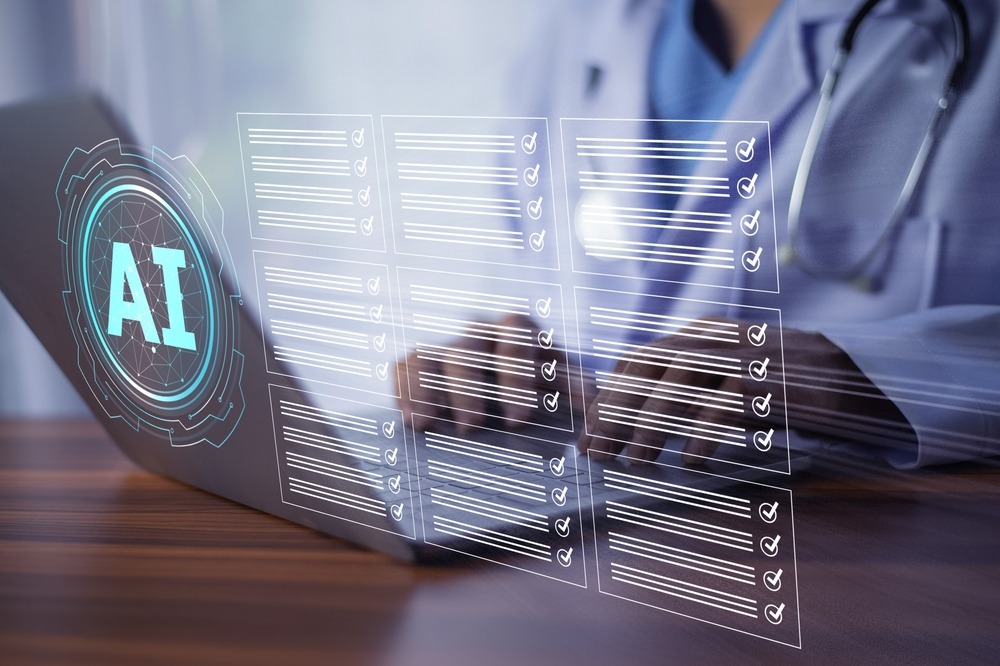Revolutionizing Legal Document Review with AI

Law firms that skillfully leverage cutting-edge technologies are embracing Artificial Intelligence (AI) for legal document review. Traditional document review, often time-consuming and resource-heavy, is transformed by AI legal tools into a robust tool that enhances accuracy and boosts efficiency, delivering improved value to all stakeholders. The integration of generative AI further enhances these benefits by refining the document analysis and expanding the legal content development scope.
Below, we’ll provide context for why and how legal teams are using this technology and the specific advantages it offers. We’ll also address how you can choose the right solution and partner for AI-assisted or fully AI-powered legal document review.
Why Legal Teams Use AI for Document Review
The biggest reason law firms and legal teams are using AI legal document review solutions is the bottom line: AI can reduce the time it takes to process legal documents by 70%.1 This leads to dramatic cost savings when applied across multiple cases. It can also allow firms to take on a more broader caseload by handling each individual matter more efficiently. Improved document workflows assist law firms by allowing lawyers more time for in-depth legal research and analysis, fostering a more efficient legal practice.
These solutions are vital when dealing with complex, challenging legal documents. AI tools can summarize medical records efficiently, freeing up resources to focus on mobilizing them in case prep. By efficiently handling the details buried in vast files, AI helps unveil critical insights hidden within client-related documents.
AI facilitates scalability by streamlining legal document review, thereby freeing up bandwidth to accommodate more cases and clients.
And AI isn’t just about efficiency. Implementing AI in legal document review not only enhances efficiency but also boosts accuracy, promoting better risk management and early issue detection across all cases.
Key Features of AI-Powered Document Review Tools
Firms aren’t just using AI for legal document review because it’s a shiny new toy. They’re finding ways to use it because of the practical benefits this emerging technology provides.
In particular, the American Bar Association (ABA) has highlighted features such as2:
- More efficient eDiscovery through swifter retrieval of electronic documents
- Summaries of lengthy texts to bring attorneys and others up to speed easily
- Easier document drafting with generative features and boilerplate templates
- Swift and accurate translation with sensitivity to cultural and legal contexts
- Easier case preparation with relevant fact extraction and trial narrative framing
How exactly does AI offer this type of comprehensive support? In most legal team use cases, it’s generation and automation.
Natural Language Processing (NLP) and Machine Learning (ML)
Natural language processing (NLP) is the most impactful element of most contemporary AI technologies. It’s what allows AI tools to learn, think, and communicate in (almost) the same ways that humans do.
In the simplest terms, NLP allows computers to understand human language. By training AI tools on huge amounts of text, it can be made to interpret that text in specific ways. This can then lead to the AI tool responding to specific textual patterns it has come to recognize.
The other major contributing factor is machine learning (ML), which works hand-in-hand with NLP to train AI tools to do the exact tasks lawyers (or anyone else) want them to do. The process works by feeding AI tools vast amounts of information with specific tasks to complete—most notably extracting patterns and predicting or inferring outputs.3
Automated Contract Analysis and Clause Extraction
In more practical terms, ML and NLP can train AI models and tools to perform useful, time-intensive tasks with complex materials (e.g., legal documents) quickly. For example, contract analysis can be automated so that an AI tool is fed contracts and can summarize and analyze them within moments, rather than the hours it would take a human to do so.
A key part of this AI-powered operation, both as a part of the process and as an output, is clause extraction. AI tools can recognize the pattern that standard contract clauses take and separate them from the rest of the text. The AI determines specific terms and stakes of these clauses and can compare them against what it knows to be applicable laws and precedents. AI assists by providing secure access to critical insights, rapidly improving drafting efficiency, and document accuracy. It can also output snippets of these clauses to facilitate any stakeholders’ decision-making, irrespective of whether the AI is tasked with recommending a choice.
Privilege, Compliance, and Risk Identification
Given AI tools’ aptitude for pattern recognition, they can ensure accuracy and speed with regard to sensitive compliance concerns of document review. AI tools can determine if and why a given document is privileged due to a confidentiality or other mandate. Similarly, they can be trained to facilitate compliance with respect to privacy rules and risks related to them.
For example, if a case involves a medical procedure, the Health Insurance Portability and Accountability Act (HIPAA) may play a crucial role. HIPAA requires certain safeguards and privacy assurances for protected health information (PHI), and an unauthorized use or disclosure of personally identifiable PHI could constitute a HIPAA breach. With access to advanced AI, lawyers can improve the way they manage sensitive information, upholding secure practices.
An AI legal document review tool can identify whether a given document is protected and swiftly redact or otherwise isolate information to mitigate breach risks.
AI Legal Document Review in Different Practice Areas
Beyond the general features that all legal teams can benefit from with AI legal document review, there are specific functions it helps with in particular specialties and industries. AI tools streamline legal workflows in all areas, but especially corporate and contract law.
Corporate Law and M&A Due Diligence
AI insights and advanced document analysis significantly benefit corporate law practices by boosting efficiency and accuracy, especially during restructuring agreements and transactions. In corporate law, mergers and acquisitions (M&As) require a thorough, formalized due diligence process. Between wrangling publicly available information and scrutinizing private records (that may be disorganized or contradictory), this can be a lengthy operation.
Ernst & Young outlines AI’s impact on M&A due diligence in the beginning, middle, and late stages4:
- In the early going, AI streamlines analysis of public data for buyers, mitigating time pressure. Streamlined access to analyzed content allows stakeholders to make more informed decisions regarding potential investments. For sellers, it can facilitate establishing a secure virtual data room (VDR).
- Mid-process, AI can supercharge due diligence analytics with much faster pattern (and issue) identification, including automated flagging and communication loops. AI’s advanced predictive capabilities in contract review ensure legally sound documentation.
- In the late stages, AI can help with generating, analyzing, and otherwise processing transaction agreements, including addressing liabilities around “fairly disclosed” facts.
In other words, AI legal document review tools facilitate all elements of due diligence.
AI-Enhanced Contract Lifecycle Management
AI tools for legal document review can also be used to streamline all elements of contract management, from generation through termination. AI trained on contracts within a given industry or business arrangement can be used as drafting tools. This includes both basic templates to be filled in with the particulars of an arrangement and full contracts filled out with these details—to be reviewed by a qualified human expert prior to signing, of course.
As mentioned above, AI tools are particularly effective in pattern recognition with respect to regulatory needs. When it comes to contracts, AI can be used to monitor for compliance risks throughout the lifecycle of a business relationship, ensuring all needs are met. Such AI-driven process improvements enhance firms’ ability to meet compliance needs, offering insights into data management strategies.
Benefits of Partnering with a Legal Support Provider
Working with a trusted legal support services provider helps firms and individual attorneys reap all the benefits of AI-assisted legal document review while mitigating possible concerns.
Dedicated support teams will streamline a firm’s integration of AI, from selecting tools to training staff and ensuring buy-in across attorneys and all other legal professionals. This tailored expertise guarantees that law firms benefit from advanced insights in AI implementation, driving efficiency.
A legal support services provider will also ensure security and confidentiality standards. The best partners will have achieved HIPAA and other compliance themselves.
Choosing the Right AI Legal Document Review Partner
Selecting a reliable partner ensures your AI legal document review delivers its fullest potential. The best providers will have up-to-date AI technology with particular capabilities tailored to your needs. For example, some AI tools are more apt for applications in corporate law, while others are a better fit for cases in the medical field.
However, it’s important to remember that even the most sophisticated tools can make mistakes, and only thorough vetting and monitoring of AI outputs can fully mitigate these risks.
Finally, ease of use for all parties should be a major consideration. With end-to-end legal support solutions, document analysis and review will talk directly to and integrate with all platforms needed for case preparation. To the extent possible, you want a seamless solution.
The Future of AI in Legal Document Review
AI innovation is showing no signs of slowing down for the foreseeable future. New tools are likely to be faster and more accurate and may even provide previously unforeseen utility.
Per Forbes, four major AI trends will shape the future of document review5:
- Multi-modal legal review, including contextual analysis of images and videos
- Autonomous, AI-driven document review support available 24/7 to clients
- The emergence of prompt engineering as a critical skill for attorneys to learn
- The capacity for “true intelligence” and much broader legal AI capabilities
Despite promising prospects, users must implement AI thoughtfully. Using automation and generation in a sensitive area like law requires balancing AI operations with trusted legal expertise.
Get Started with AI Legal Document Review
AI legal document review is changing the way attorneys and firms prepare for and manage cases. In particular, machine learning and natural language processing power robust functionalities like automated contract analysis and generative capabilities for overall document management.
Looking ahead, these features only figure to grow in number, variety, and complexity. Stay ahead by adopting AI tools that offer comprehensive document analysis and legal research capabilities. The firms best-positioned for success in 2026 and beyond are already making smart use of the best available technology—and getting the most out of it with litigation support services.
Sources:
- BizData. AI Legal Document Review: Save 70% of Time and Slash Costs. http://bizdata360.com/ai-legal-document-review-save-70-of-time-and-slash-costs/
- ABA. How AI Enhances Legal Document Review. https://www.americanbar.org/groups/law_practice/resources/law-technology-today/2025/how-ai-enhances-legal-document-review/
- IBM. What is machine learning? https://www.ibm.com/think/topics/machine-learning
- EY. How AI will impact due diligence in M&A transactions. https://www.ey.com/en_ch/insights/strategy-transactions/how-ai-will-impact-due-diligence-in-m-and-a-transactions
- Forbes. The Next Chapter: Five AI Trends Reshaping Legal Document Review. https://www.forbes.com/councils/forbestechcouncil/2025/07/15/the-next-chapter-five-ai-trends-reshaping-legal-document-review/
- AWS. What is Natural Language Processing (NLP)? https://aws.amazon.com/what-is/nlp/

Editoral Policy
Content published on the U.S. Legal Support blog is reviewed by professionals in the legal and litigation support services field to help ensure accurate information. The information provided in this blog is for informational purposes only and should not be construed as legal advice for attorneys or clients.

